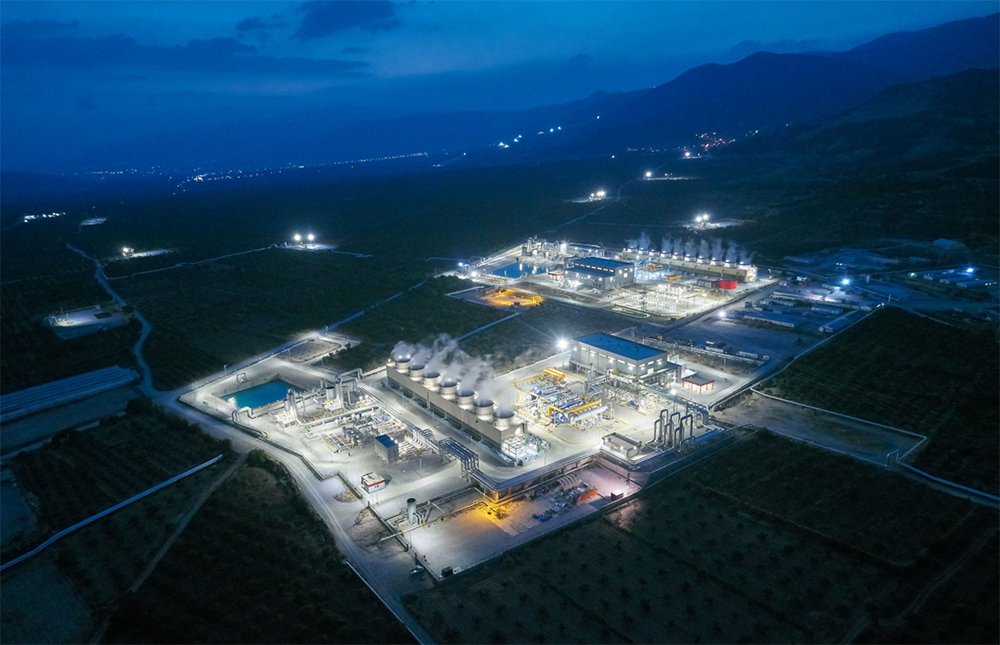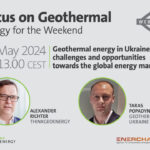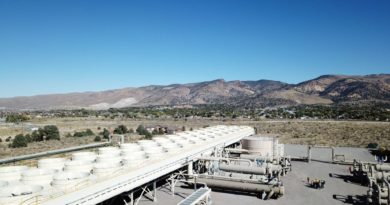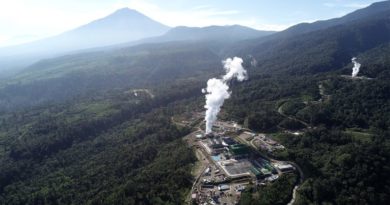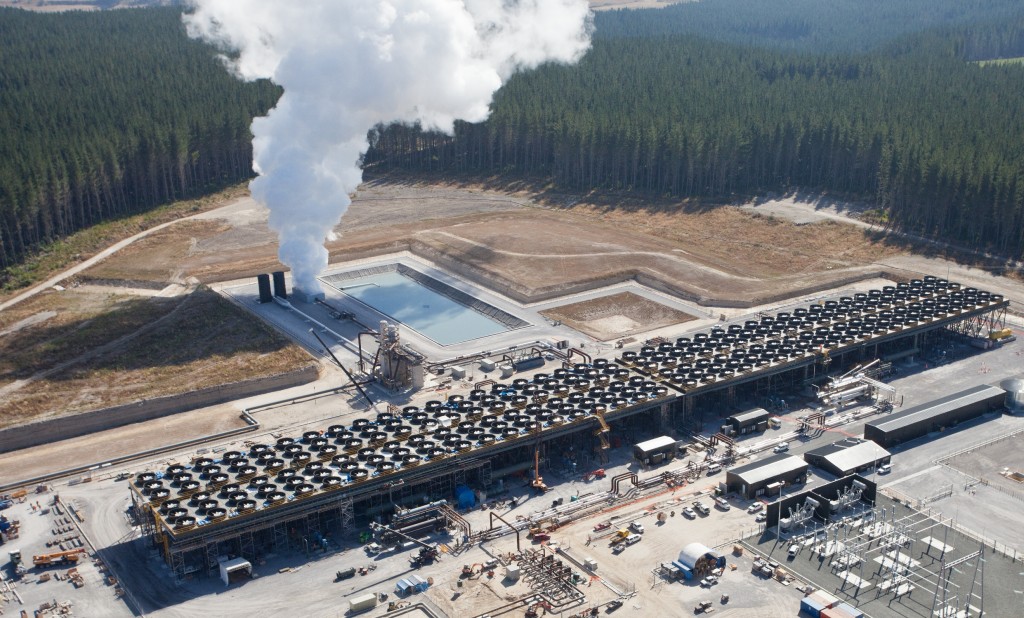Webinar recap – Current situation and opportunities of Turkish geothermal market
Energy Disrupter
In this webinar, Cannur Bozkurt of Enerchange Turkiye gives updates on the current status of Turkiye’s geothermal industry and invites everyone to IGC Turkiye 2022.
On July 2022, ThinkGeoEnergy and Enerchange hosted a webinar with Cannur Bozkurt who gave an overview of the geothermal development and opportunities in Turkiye. Cannur Bozkurt currently is the Managing Director of Enerchange Türkiye with a main focus on the development of geothermal projects. Cannur is also the former editor of JeotermalHaberler, our Turkish language platform.
The full recording of the webinar can be viewed at the video below or at the official YouTube channel of Enerchange.
A history of geothermal in Turkiye
In 1926, the first law governing thermal waters came into effect in Turkiye. By 1935, the Mineral Research and Exploration Institute (MTA) was established, paving the way for for the preparation of a hot and thermal water inventory in the country.
By the 1960s, research on thermal waters and international cooperation projects were initiated by the MTA. In 1961, the first geothermal feasibility study was conducted in Izmir quickly followed the next year by the first geothermal drilling operation in the same region. In 1967, MTA and UNDP started the Western Anatoli and Kilizdere-Denizli geothermal exploration project. After a year, the first high-temperature geothermal reservoir was discovered in Kizildere with a temperature of 198 degrees Celsius at 540 meters depth.
The first geothermal power plant in Turkiye was established in Kizildere in 1974. This pilot plant had a capacity of 0.5 MWe. This also coincided with the establishment of the first pilot greenhouse facility with a land area of 1000 square meters.
In 1982, additional high-temperature geothermal fields in Germencik and Tuzla were discovered following successful drilling operations. On the same year, the first geothermal regulation was included in the country’s mining law. A year after, the first geothermal heating system using an in-hole heat exchanger was built in Izmir.
In 1984, the first single-flash geothermal power plant with 15 MWe installed capacity was commissioned in Kizildere by the Turkish Electric Institute, a state organization. It was also at this that the first carbon dioxide factory harnessing CO2 from geothermal fluids was built – the first cascade utilization of geothermal fluids in Turkiye.
In 1987, the first central heating system using geothermal energy was established in Balekisir. Increased investments in heating applications followed, paving the way for heating systems in Afyon, Izmir, Edremit, Saraykoy, Kirsehir, and Sorgun among a few other areas.
In 2005, Turkiye became the host country of the World Geothermal Congress (WGC) in Antalya. The first private geothermal power plant with binary system technology was established in Aydin by MEGE in 2006.
As a result of the liberalization of the electricity market, the geothermal law came in force in 2007 . The next year, the Kizildere geothermal field was privatized and handed over to Zorlu Enerji. A year later, there was a total of about 3000 exploration and exploitation licenses were granted for geothermal projects.
In 2009, the first double-flash geothermal power plant was established in Aydin with a capacity of 47.4 MWe. After 2010, the MTA started farming out discovered geothermal fields for further exploration and development by the private market. By 2013, the first phase of new development in Kizildere added a new 88-MW power plant by Zorlu. By the end of 2015, Turkiye had reached 614 MWe of geothermal power generation capacity.
The history of geothermal in Turkiye shows that, since the beginning of the Turkish Republic, the government has been very supportive of the utilization of geothermal resources at various levels.
Geothermal resources of Turkiye
In the 1990s, the forecaster thermal potential of Turkiye was 2000 MWt while the geothermal power generation potential was at 1200 MWe. This forecast was based on information from a limited number of wells mostly in the Aegean region and drilled only to shallow depths.
Today, 63 cities in Turkiye have been identified as having geothermal resources. There are approximately 415 discovered geothermal fields with temperatures above 30 degrees Celsius. More than 1000 geothermal spots (such as hot springs) have been documented.
The forecaster thermal potential of Turkiye today stands at 60,000 MWt and the power generation potential is 4000 MWe. Further, harnessing Enhanced Geothermal Systems (EGS) technology may increase the geothermal power generation potential to 400,000 MWe.
Current power generation and direct use capacities
Today, Turkiye has an installed geothermal power generation capacity of 1,676 MWe. If we look at the growth of the total installed geothermal power capacity in Europe, Turkiye has always been the leader. From 2012 to 2016, Turkiye contributed 95% of the additional capacity. In 2018, Turkiye’s contribution was 82%. On a global perspective, Turkiye contributes about 10% of additional geothermal power capacity per year.
Of the 65 turbine units in Turkiye, 58 use binary Organic Rankine Cycle (ORC) technology. There are also minor applications of single-flash and double-flash turbines.
When it comes to direct use, a majority of applications goes towards thermal fluid heating, typically for tourism. This is followed by district heating, greenhouse heating, and thermal facility heating. Contribution of food drying, cooling, and geothermal heat pumps is very small.
With Turkiye’s warm and humid climate, there is clearly lots of opportunities for geothermal cooling. There is currently only one example in Izmir that is using an absorption cooling system since 2018.
There are currently 18 installations of geothermal heating in Turkiye covering more than 16 million square meters. This corresponds to roughly only 1% of the country’s total building area.
Sustainable food production is an emerging area for geothermal heat direct use. Turkiye currently ranks 2nd in Europe in terms of total food production from greenhouses. These greenhouses are concentrated mostly in the southern regions where climate is more favorable. Of the 796 square kilometers of greenhouses in Turkiye, only 2% are considered modern greenhouses and only 3.5% (as of 2019) are heated. The share of geothermal resources is only 30%.
Food waste is a major issue in Turkiye as with the rest of the world. The energy footprint of food waste corresponds to a bout 8% of Turkiye’s annual energy consumption. In this context, food drying can prove to be an important application of geothermal heat. The current capacity of food drying using geothermal is very limited at only 9.5 MWt.
There are several examples of cascade applications of geothermal heat in Turkiye. The common scenario is that brine from a geothermal power plant is used either for district heating or for heating of greenhouses. Production of CO2 is still in practice in some power plants.
Incentives and supporting mechanism
The incentives for power generation are framed under Renewable Energy Resources Supporting Mechanism (YEKDEM). The current regulation is valid for facilities starting generation from July 1, 2021 to the last day of 2025. This corresponds to a Feed-In Tariff of USD 3.4 cents/kWh, which is applicable for 10 years. Current market prices are higher, prompting negotiations with power plant operators and policymakers for a correction of the regulation.
An additional incentive given to power plants that use domestic equipment is an addition USD 7 cents/kWh, valid for 5 years.
To encourage greenhouse applications, geothermal resourced Greenhouse Organized Specialization Zones have been established by the Ministry. This grants usage rights of real estate belonging to the treasury for entrepreneurs investing in geothermal greenhouses. Government banks can provide low-interest loans for agricultural products and 50% grant support within the scope of Supporting Agriculture-Based Investments.
Other incentives granted to geothermal developers include a 10% discount on power generation pre-license and license application fees, land allocation incentives, grid connection priority, and risk sharing mechanisms and funding opportunities provided by the World Bank.
International Geothermal Congress & Exhibition (IGC) Turkiye 2022
On September 19 to 21, 2022, the IGC Turkiye – the most important event of the Turkish geothermal indsutry – will be taking place in the Kaya Thermal Hotel, Izmir. For this year’s IGC Turkiye 2022, we expect more than 200 senior delegates to discuss the challenges of the world’s fastest growing geothermal market.
Organized by Jeotermal Haberler and Enerchange, the IGC Turkey 2022 event will showcase world-class geothermal projects, country updates and financing plans, economies of scale and cost reduction potentials, developing and innovative studies, geothermal potential, where workshops, a trade fair exhibition and congress will be discussed. and explore opportunities for oil and gas fields and prospects for the development of heat and power generation facilities.
With synchronous translation from Turkish to English and from English to Turkish, the congress is open to both Turkish and international participants. Registration to the event is available via this link.

Source: Enerchange via YouTube


